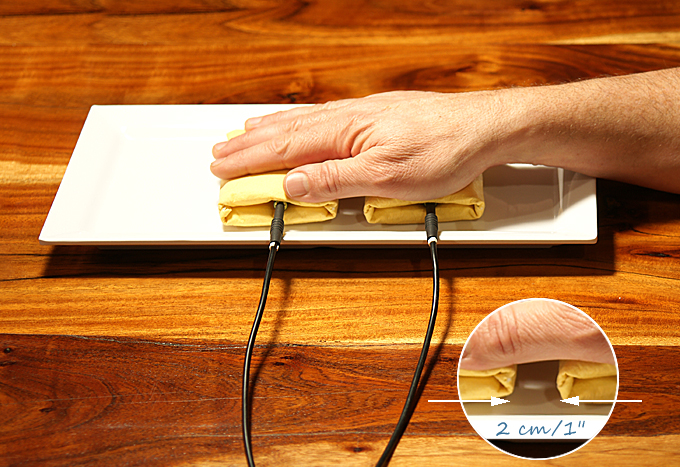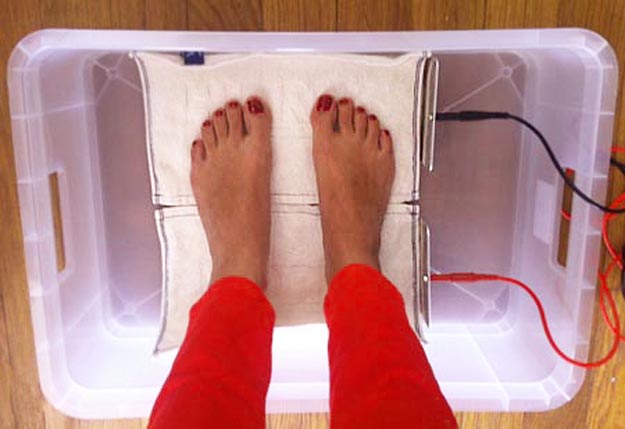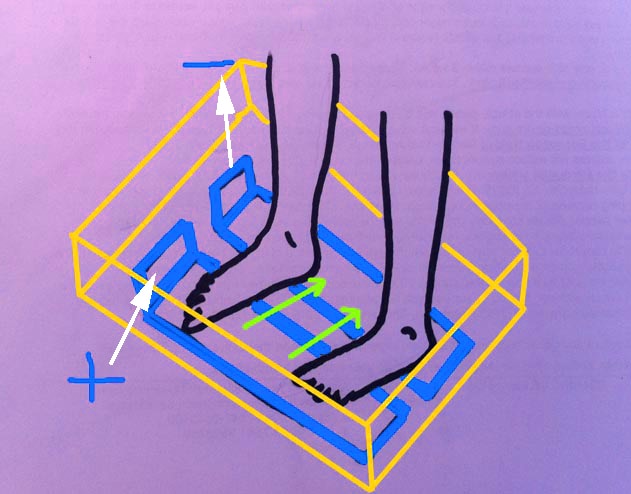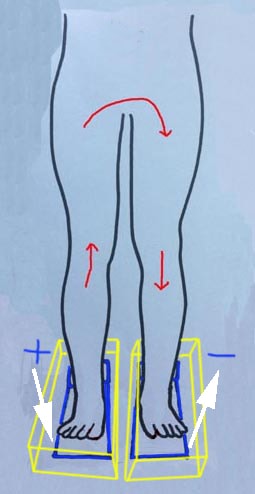Iontophoresis - Limit the current flow to small areas
The iontophoresis current flows from one pole to the other over the user's bodyDuring iontophoresis, the current flows from one pole to the other via the user's body.
There are cases in which the user doesn't want to conduct the treatment current through the entire body. One such example are implants, metal screws, nails, or plates that
It is not always desired that the iontophoresis current is fully conducted through the whole body. A good example are implants, screws, nails or metal plates that remain in the body as a result of surgery.
Other no-gos are piercings and any metal jewellery that cannot be removed.
In these cases, you should always consult your doctor about your individual situation. Your doctor might, for example, suggest you avoid the current flow in certain areas of the body.
Iontophoresis therapy with implants or metal screws
First, we have to be clear: Any metal parts or implants in the body, no matter where they are located, are a contraindication for iontophoresis treatments. You need to ask your doctor or surgeon whether you can perform Iontophoresis AT ALL. Theoretically (following the laws of theoretical physics), the contraindication should only apply if the metal parts are located in the current flow. But since we aren't medical doctors, all contraindications must be confirmed by a trustworthy doctor or surgeon to make sure you are safe to perform iontophoresis.
When deciding on how to do iontophoresis, IN ANY CASE, you should ask your doctor if it is safe for you and if there is a way to exclude the metal parts from the direct current flow. This procedure might be similar to the process illustrated in the pictures below, which are based on theoretical physics. Once you have this information, you should be able to perform iontophoresis treatments despite any metal parts or implants in your body. There should be no need to stop your iontophoresis treatments completely. By following some simple rules, you might be able to continue your sessions.
Do I have to take off my earrings when I treat my hands, armpits or feet? No!
What about dentures (including metal dentures), braces, piercings and tattoos containing metal?
Anything that is not in the direct current flow is not a contraindication for iontophoresis. Based on this principle, conclusions can be drawn for other areas of the body.

But we must emphasize again: all metal implants are contraindications - We are no doctors, so ask a medical professional before trying the method below according to YOUR situation.
In theory, the important thing is that the metal parts aren't located where the current flows. So, for example, if you have braces, the hand/feet/underarm treatment should not be a problem, whereas the facial treatment would be contraindicated. If you have a metal screw in your knee, then the hands/underarm treatment should be a not problem, but for the foot treatment, you would have to proceed differently.
If you want to treat your feet despite having a metal piece or implant in the path of the current flow, the following procedure may help: take both electrodes and place them in a large plastic tub (the default cases are too small), one next to the other. Put the towels on top of them and then put both of your feet perpendicular to the electrodes, meaning each foot should touch both electrodes (as in the picture below).
Please note: The towels should be dripping wet. Do not fill too much water into the tub, since this might reduce the effect of iontophoresis. There should be a minimum distance of about 2 cm between the electrodes and a distance of 0.5 cm between the wet towels. If you use only one towel (or if the two towels touch and effectively become one), the current flows mainly over the material of the towel and not over the skin. This reduces the iontophoresis effect.
The electric current concentrates in the area between the parts that are nearest to each other (in our picture, this would be the space between the two electrodes). This might lead to a reduced treatment efficiency, since the required current concentrates on only one area of the feet.
Another important thing to note: The towels must cover the whole surface of the electrodes to prevent burns and irritations due to direct contact with the skin.

If you conduct your feet treatment like this, the current flow should, in theory, remain on your feet instead of going through your feet, legs and hips.


If your implant or metal screw is located in your arms instead, for example in your elbow, this method might help you too.
As mentioned earlier, the most important thing is that the current does not flow through the area impacted by the screw or implant.
As always with iontophoresis, everything is highly individual. You have to determine if this method will work for you by trial and error. Again, all contraindications or modified current treatments should be discussed with your doctor to see if it is harmless.
ONCE AGAIN, WE ARE NOT MEDICAL DOCTORS AND THIS METHOD HAS NOT BEEN CONFIRMED BY MEDICAL THEORY. IT IS BASED ON THEORETICAL PHYSICS. ASK YOUR DOCTOR BEFORE MAKING ANY TREATMENT MODIFICATIONS.
